Libros
Sustainable Heritage Management - Design: Notions, Methods and Techniques
Cham, Suiza
2025
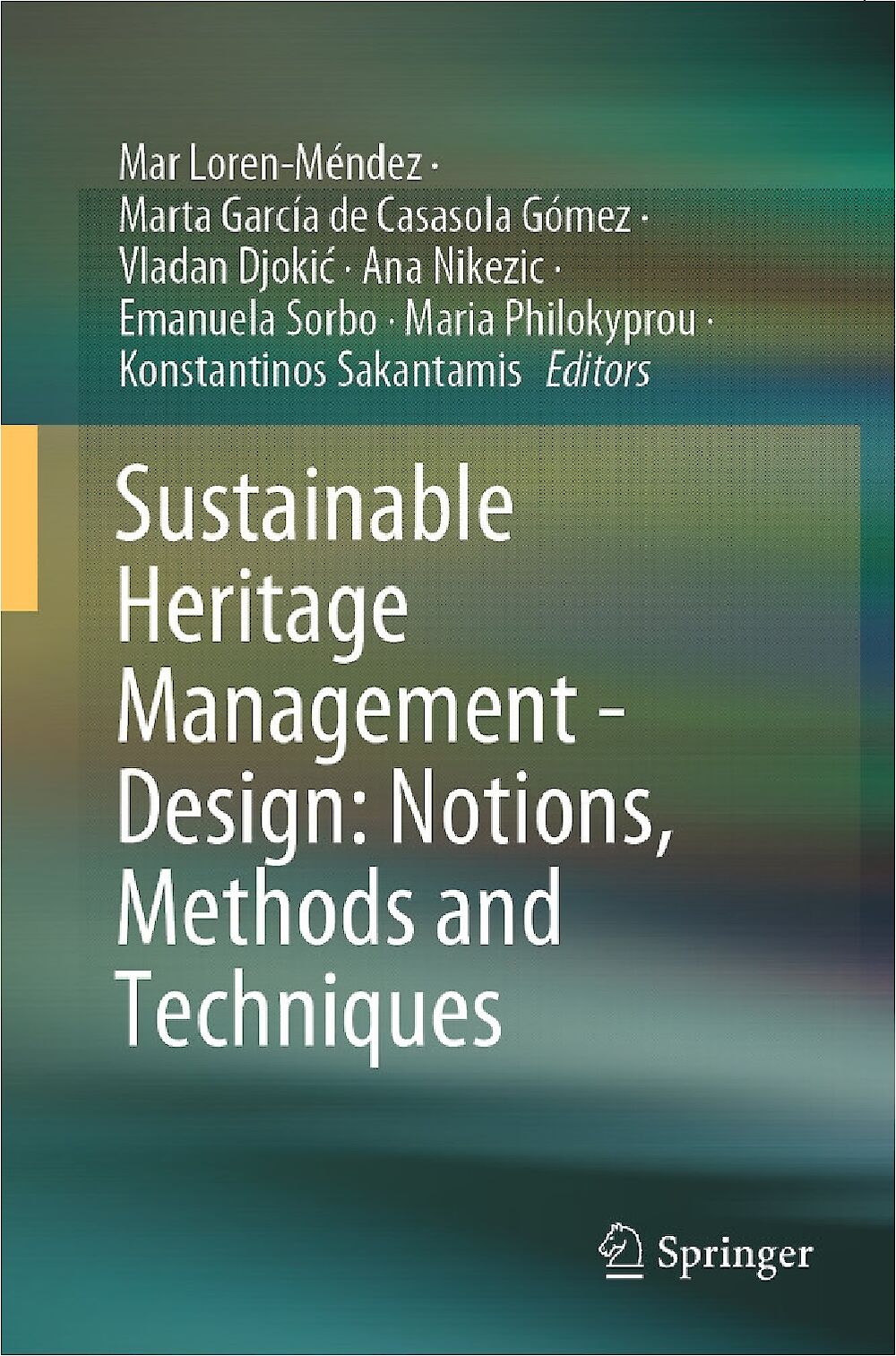
This book is coordinated by the UNESCO Chair on Modern Urban heritage CREhAR (Creative Research and Education on heritage Assessment and Regeneration), at the School of Architecture, Universidad de Sevilla (USE), institutions and their research groups which constitute a benchmark for research on cultural heritage and sustainability. Developed in the context of a European network of five universities, University of Belgrade, Serbia; University of Seville, Spain; IUAV University of Venice, Italy; University of Cyprus, Cyprus; and Aristotle University of Thessaloniki, Greece- this consortium on heritage and sustainability have been collaborating closely, both as authors and editors.
This book contributes to opening the way to managing heritage from a sustainable perspective, characterizing it from a holistic approach that includes environmental conservation and bioclimatic design. The central innovation of this contribution rests on combining the processes and methods of the heritage studies with those of the project within the field of Architecture and Urban Planning.
The volume is structured into five sections: from the concepts, methods and tools, without forgetting the training in proper documental search and systematization, characterization and values identification, key to define criteria to design strategies and actions. Addressed in three transversal perspectives: education, practice, and research, it gives an integral and complete answer to students, practitioners, and researchers.
Regarding its contribution to the literature in the field, this volume offers an international publication in the combined fields of heritage and sustainability, providing both conceptual and specific didactic contents and materials, for what is needed to deal with the complex process involved in heritage management. It looks for quality proceedings to project integrated actions on heritage assets, from a transdisciplinary perspective. This book promotes decision making on expert knowledge and cultural values; the proper use of methods, strategies and tools, and reaches agreements through participation of the different agents involved.
Más información
- Editorial: Springer
- Páginas: 305
- ISBN: 978-3-031-81969-8; 978-3-031-81970-4 e-Book
- Publicado en Cham, Suiza
- Indicios de calidad:
- Editor
- Mar Loren-Méndez
- Marta García-Casasola
- Vladan Djokić
- Ana Nikezić
- Emanuela Sorbo
- Maria Philokyprou
- Konstantinos Sakantamis
- Contribución
- Capítulo de libro
- Coordinadora de la publicación
- Editora
- Prólogo / introducción
- Idioma(s)
- Inglés
Compártelo
Copia el enlace a este ítem:International Handbook for Students on Research and Design for the Sustainable Heritage
Belgrado, Serbia
2023
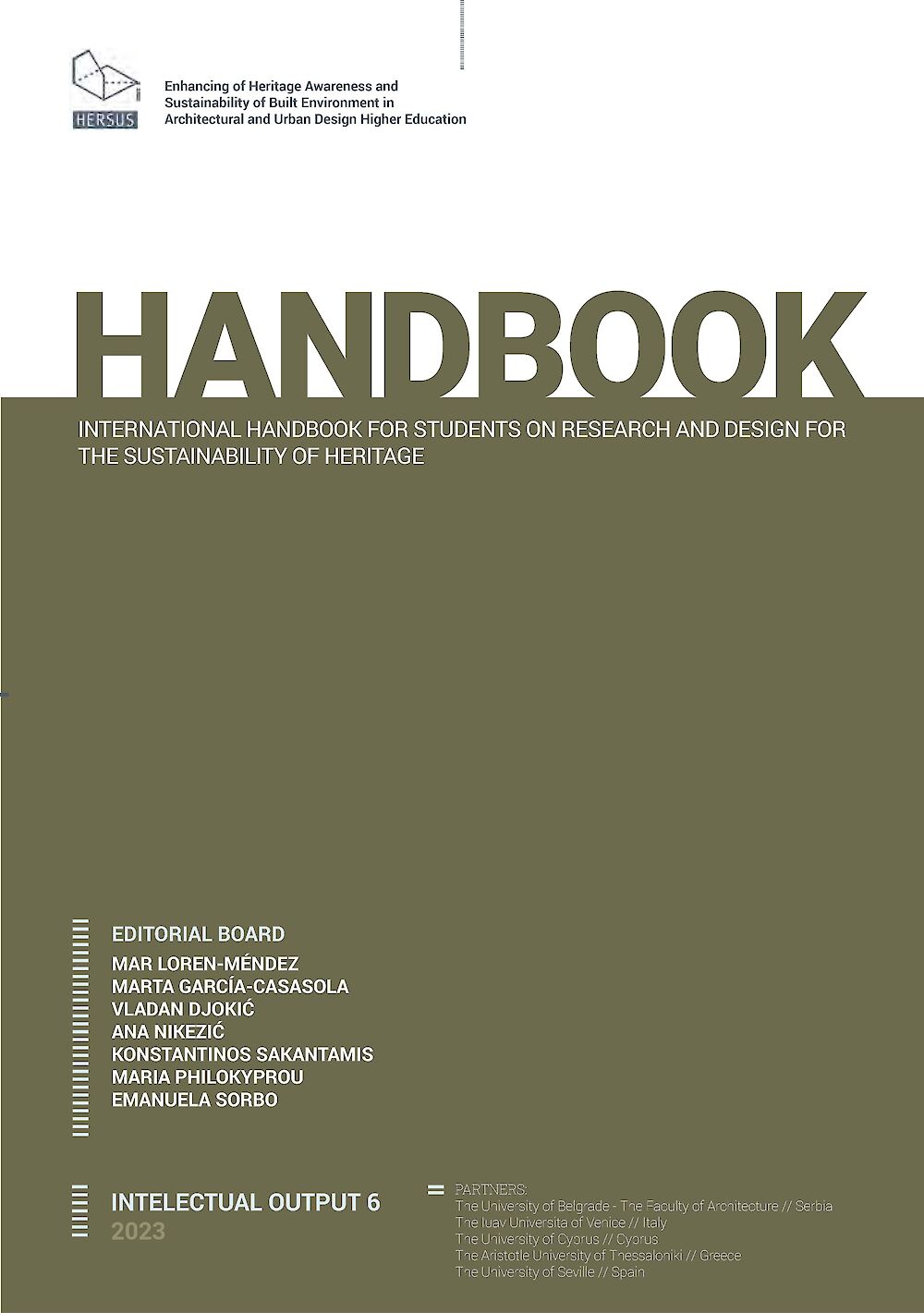
The International Handbook for Sustainable Heritage Management and Design: Notions, Methods and Techniques, is the last Intellectual Output of the European project HERSUS Enhancing of Heritage Awareness and Sustainability of Built Environment in Architectural and Urban Design Higher Education, an Erasmus+ project within the EU program for education, training, youth and sport, developed by a network of five universities. This last output has been designed and developed in a form of a publication in the field and it is expected to have an overall impact on different target groups in the academic environment, including the students, educators, and researchers, but also practitioners and institutional agents.
AIMS AND PURPOSE
The aim of this output is to develop didactic materials by professionals who are involved in the project, which should be used on new courses on master level. The International handbook for students on Research and Design for the Sustainability of Heritage aims to offer an innovative scope, combining global and holistic approach to heritage. International handbook for students is in English, and it is prepared in a digital version for dissemination.
The ‘International handbook for Sustainable heritage management and design is conceptualized in the form of learning material that integrated both (1) texts written by consortium leading professionals (teaching staff) dealing with relevant topics, with (2) selected texts/papers of the world’s leading experts on observed topics. Accordingly, the Handbook is organized in two PARTS:
The first part of the handbook, PART I, integrates the five HERSUS partners contributions in three chapters from the perspective of EDUCATION, the PRACTICE and the RESEARCH
The second part, PART II, develops the guest experts’ contributions along the development of the project, offering their valuable knowledge in the context of HERSUS in this publication.
Más información
- Editorial: University of Belgrade, Faculty of Architecture
- ISBN: 978-86-7924-331-7
- Publicado en Belgrado, Serbia
- Indicios de calidad:
- Editor
- Loren-Méndez, M.
- García-Casasola, M.
- Djokić, V.
- Nikezić, A.
- Sakantamis, K.
- Philokyprou, M.
- Sorbo, E.
- Contribución
- Capítulo de libro
- Editora
- Idioma(s)
- Inglés
Compártelo
Copia el enlace a este ítem:Book of courses
Belgrado, Serbia
2023
Imagining Program for Sustainability of the Built Environment and Heritage Awareness
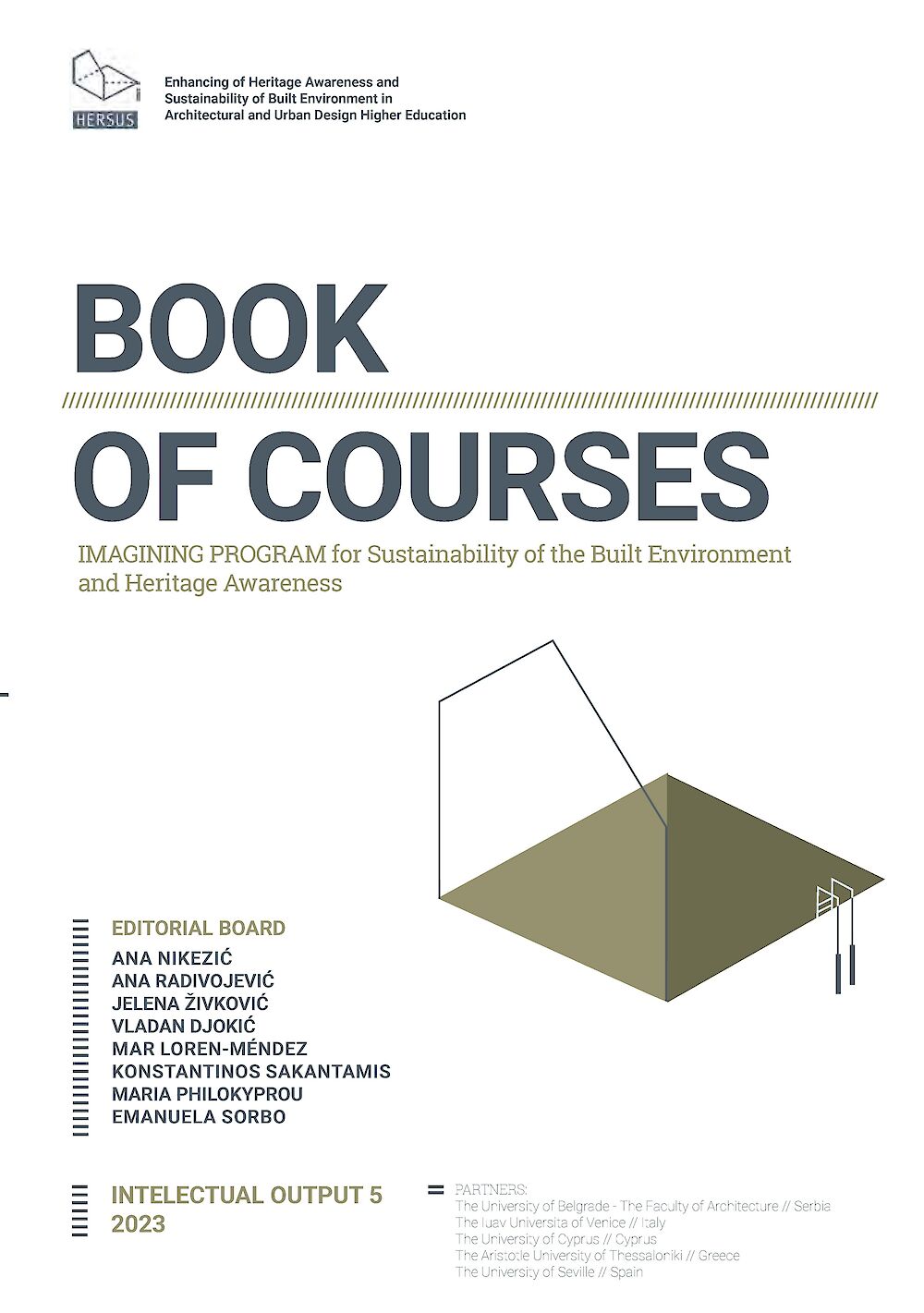
Book of courses is the fifth HERSUS intellectual output, designed and developed in a form of Course/curriculum and Imaginary Study Program Concept. The development of the ”Book of courses” is in direct relation to the need for the introduction of innovative curriculums within the thematic framework of sustainability and heritage, among the partner organizations, and also other organizations in participating countries in Europe. The development of the IO5 is essential for the HEI system in European countries, for its alignment with European standards, and for creating opportunities for long-term partnerships between HEIs in the field of architectural and urban studies. The need for this output is also directly related to the objective to improve the practical arena of urban and architectural design.
The aim is to collect all experiences from the previous phases of the project (see Results section) in order to create sustainable academic courses, which would educate new generations of professionals.
Regarding content, IO5 includes following course collections:
· FUNDAMENTALS – theoretical unit, compulsory in its nature imagined as a framework and a foundation of the whole program; · DESIGN STUDIO – practical unit, elective in its nature imagined as a research-design core of the program; and · SPECIALISATION – an applied unit that covers all kinds of tools and assessments, as well as other technical, artistic, social, etc. methodological skills elective in nature intended to support design studio unit. · Comparative analysis of MASTER THESIS framework of HERSUS HEIs is provided, as well as DEMONSTRATIONS of existing practices of Design Studio; and · Additionally, SWOT Analysis of existing study programs of HERSUS partners is annexed to IO5.
Más información
- Editorial: Faculty of Architecture, University of Belgrade
- ISBN: 978-86-7924-327-0
- Publicado en Belgrado, Serbia
- Indicios de calidad:
- Editor
- Nikezić, A.
- Radivojević, A.
- Živković, J.
- Djokić, V.
- Sorbo, E.
- Loren-Méndez, M.
- Sakantamis, K.
- Philokyprou, M.
- Contribución
- Capítulo de libro
- Editora
- Idioma(s)
- Inglés
Compártelo
Copia el enlace a este ítem:Arquitectura, ciudad y patrimonio
Madrid, España
2022
Historia, teoría e intervención contemporáneas
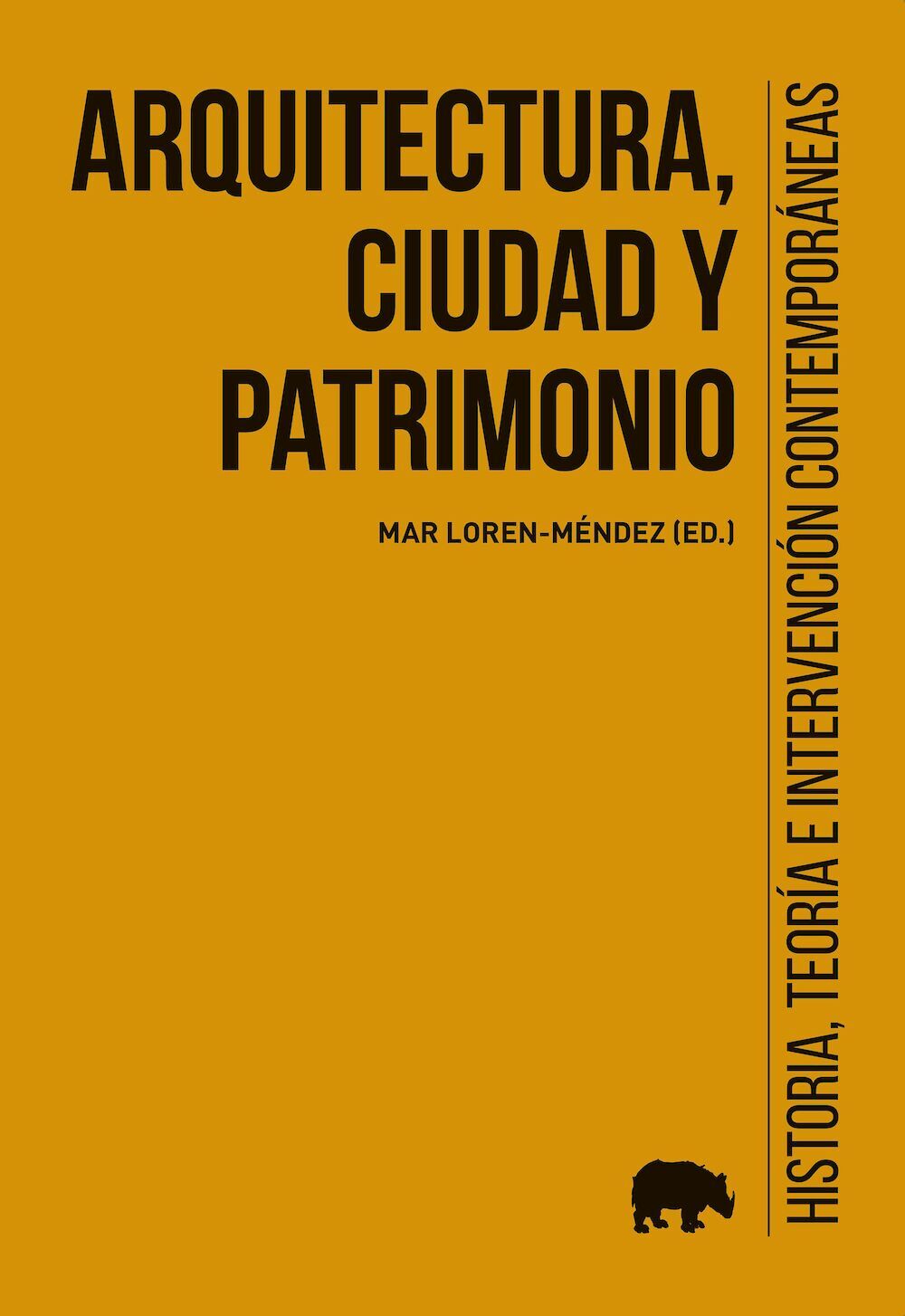
Este libro celebra los 25 años de investigación realizada por el grupo Ciudad, Arquitectura y Patrimonio Contemporáneos de la Universidad de Sevilla. Cuatro grandes ejes dan coherencia a su extensa e intensa producción: La historia de la arquitectura y de la ciudad; Teorías de la ciudad contemporánea; Patrimonio: conceptos y métodos; Patrimonio: gestión e intervención.
Más información
- Editorial: Abada
- ISBN: 978-84-19008-19-0
- Publicado en Madrid, España
- Indicios de calidad:
- Editores
- Mar Loren-Méndez
- Contribución
- Capítulo de libro
- Editora
- Idioma(s)
- Español
Compártelo
Copia el enlace a este ítem:Statements for Teaching through Design for Sustainability of the Built Environment and Heritage Awareness
Belgrado, Serbia
2021
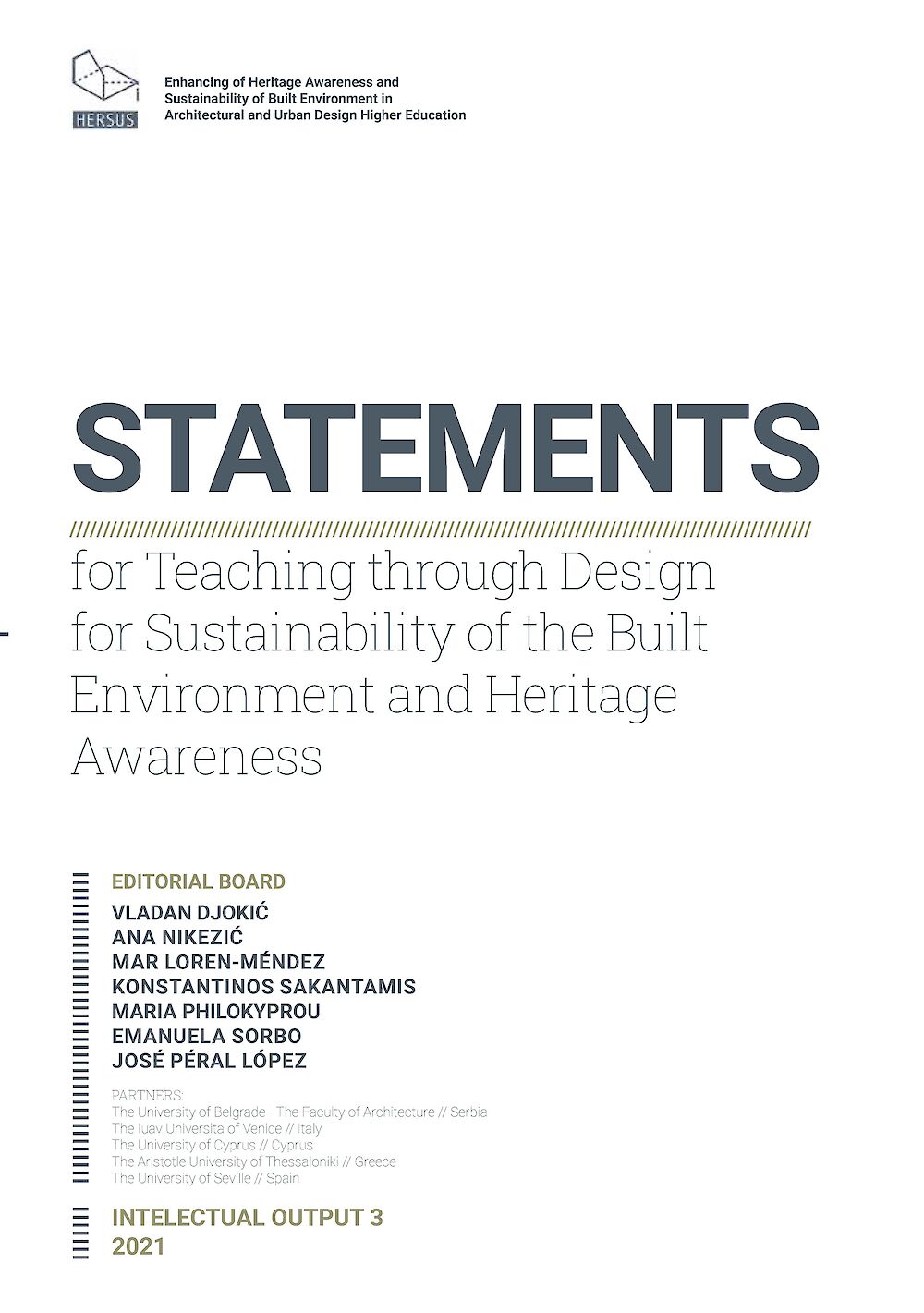
HERSUS project Intellectual Output 3, titled “Statements for Teaching through Design for Sustainability of the Built Environment and Heritage Awareness” presents a strategy containing (1) necessary qualifications that an architect has to obtain in order to be competent for architectural and urban design, as well as (2) up-to-date qualification that architectural educator needs to obtain in order to advance teaching about the sustainability of the built environment and heritage awareness. Having in mind that the development of IO1 and IO2, as well as, HERSUS Webinar have posed different challenges for all HERSUS researchers, the IO3 aims at reaching a consensus among the HERSUS consortium on concepts and fields of action relevant to sustainability and heritage. In this sense, the initially defined fields are reviewed and hence, the IO3 enables a consensus established through a multi-geographical and multicultural perspective across Europe.
The idea for IO3 arose from the need to bring together teaching staff and experts in disciplines of the built environment to formulate the new unique students’ profiles. Statements for teaching bring the innovative element through the implementation of interdisciplinary teaching based on learning by design methodology. Upon completion of the IO3 publication, the HERSUS target groups (students/teachers/trainers/tutors) could use this book to gain a clearer picture of specific training and teaching activities that can enable the alignment of the needs of the practice and teaching of the sustainability of the urban and architectural heritage.
Más información
- Editorial: Faculty of Architecture, University of Belgrade
- ISBN: 978-86-792-4281-5
- Publicado en Belgrado, Serbia
- Indicios de calidad:
- Editor
- Djokic, V.
- Nikezic A.
- Loren-Méndez, M.
- Sakantamis, K.
- Chatzdimitriou, M.
- Philokyprou, M.
- Sorbo E.
- Peral-López, J.
- Contribución
- Capítulo de libro
- Editora
- Idioma(s)
- Inglés
Compártelo
Copia el enlace a este ítem:Study. Questionnaire for the State of the Art in educating sustainability and heritage
Belgrado, Serbia
2021
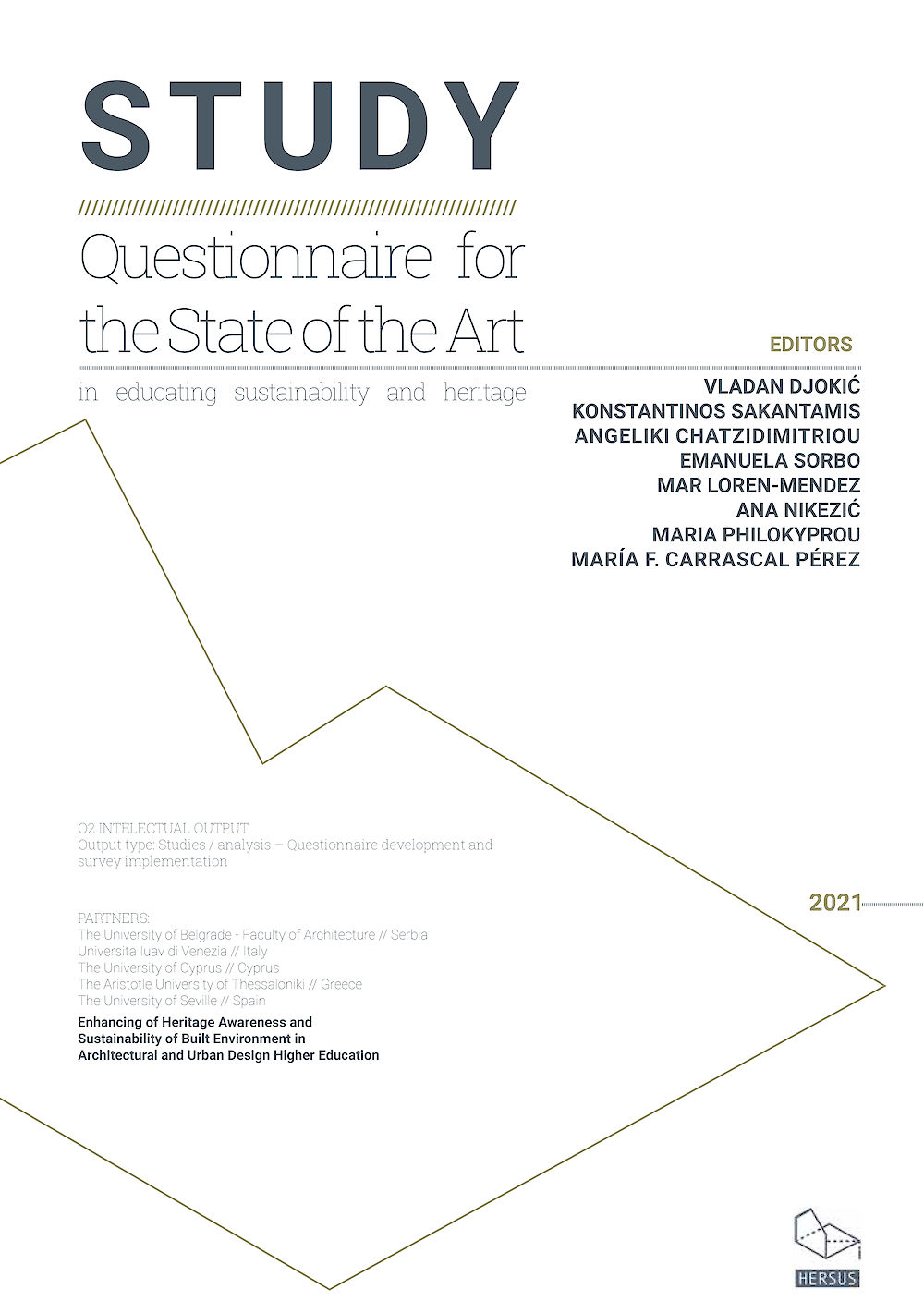
IO2: Questionnaire for the State of Art forms the second deliverable of the first phase of the HERSUS project, whereby analytical, process and problem-based research is carried out in order examine the state of the art in the field of urban and architectural design education, in line with the concepts of sustainability and heritage.
Intellectual Output 2: Questionnaire for the State of Art is the product of a survey design, dissemination and analysis strategy, managed by the AUTH HERSUS team and undertaken by all HERSUS participating institutions. The survey consisted of a two-pronged approach focusing on two target groups, experts and students, residing in the Hersus respective countries, aiming at creating an argumentative and critically analyzed report on the state of learning of sustainability and heritage in the field of the urban and architectural design of higher education.
The purpose of IO2 is to support the participating Architectural Schools in establishing high-quality standards connected to teaching in the field of sustainability of the built heritage, through cross-cultural communication and problem solving at an international context.
The process allows the results of IO1 and IO2 to serve as a basis for creation of Statements for teaching through design for Sustainability of the Built Environment and Heritage Awareness (IO3), all with the aim of creating a professional profile of a designer for the sustainability of built environment and heritage. Furthermore, all these intellectual outputs should result as a basis for future research in the subject area and as a value framework and an occasion for other European schools of architectural and urban design to engage in action for thematic innovation of study programs.
Más información
- Editorial: Faculty of Architecture, University of Belgrade
- ISBN: 978-86-7924-267-9
- Publicado en Belgrado, Serbia
- Indicios de calidad:
- Editor
- Djokic, V.
- Sakantamis, K.
- Chatzdimitriou, M.
- Sorbo E.
- Loren-Méndez, M.
- Nikezic A.
- Philokyprou, M.
- Carrascal-Pérez, M. F.
- Contribución
- Capítulo de libro
- Editora
- Idioma(s)
- Inglés
Compártelo
Copia el enlace a este ítem:Best Practices in Educating Sustainability and Heritage
Belgrado, Serbia
2021
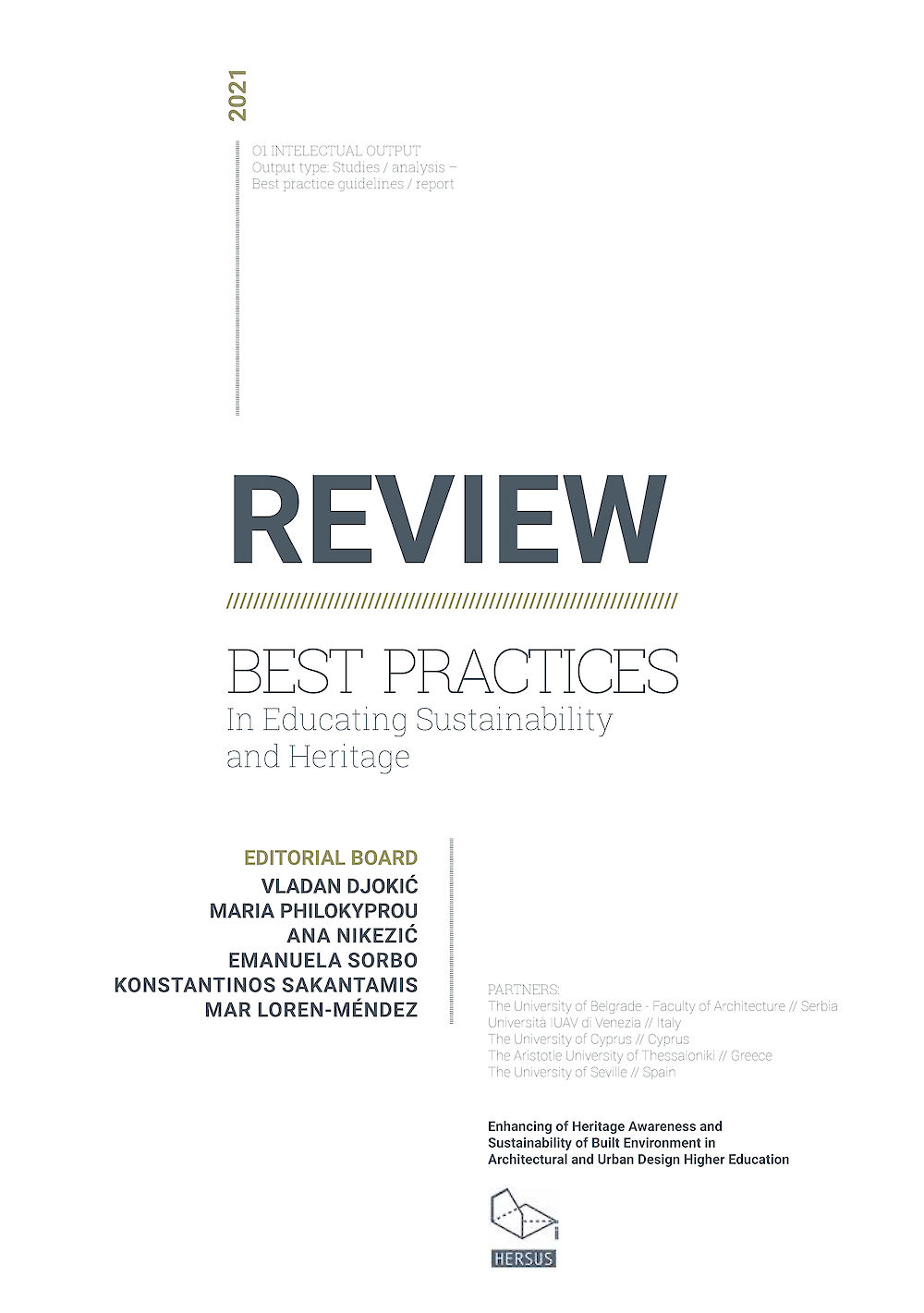
The “Review: Best practices in educating sustainability and heritage” presents data collection from each of the participating schools of Architecture, as well as from other relevant associated organisations. The purpose of this Review is to support the participating Architectural Schools in establishing high-quality standards in the terms of sustainability of the built heritage, through cross-cultural communication and solving problems in an international environment. The development of the Review should encourage (1) teaching possibilities on the sustainability of the built environment and (2) teaching possibilities on heritage awareness.
The applied approach balanced between different geographies, cultures, and scales is providing new insight into the complexity of the definition of heritage in the contemporary context, testifying that heritage transposes from an urban artifact to the urban landscape. It confirms the increasing complexity of thinking about urban and architectural heritage, representing a growing challenge for both researchers and educators to implement such topics in curricula.
This publication presents the results of the first four months of the project, and is structured in three main parts:
- Built Architectural and Urban projects (20 projects, four from each of the five partner organizations)
- Pedagogical and Educational Models (20 courses, four from each of the five partner organizations)
- Influence of National Policies on the Sustainability of Heritage (one report per each partner organization
The prepared publication’s quality was contributed by architectural offices and individuals from five different countries, public bodies, and students whose works were used to illustrate the specific course methodologies.
Más información
- Editorial: Faculty of Architecture, University of Belgrade
- ISBN: 9788679242440
- Publicado en Belgrado, Serbia
- Indicios de calidad:
- Editor
- Djokic, V.
- Philokyprou, M.
- Nikezic A.
- Sorbo E.
- Sakantamis, K.
- Contribución
- Capítulo de libro
- Editora
- Idioma(s)
- Inglés
Compártelo
Copia el enlace a este ítem:Escritos de Víctor Pérez Escolano
Sevilla, España
2018
Sinuosidades de un itinerario nunca interrumpido
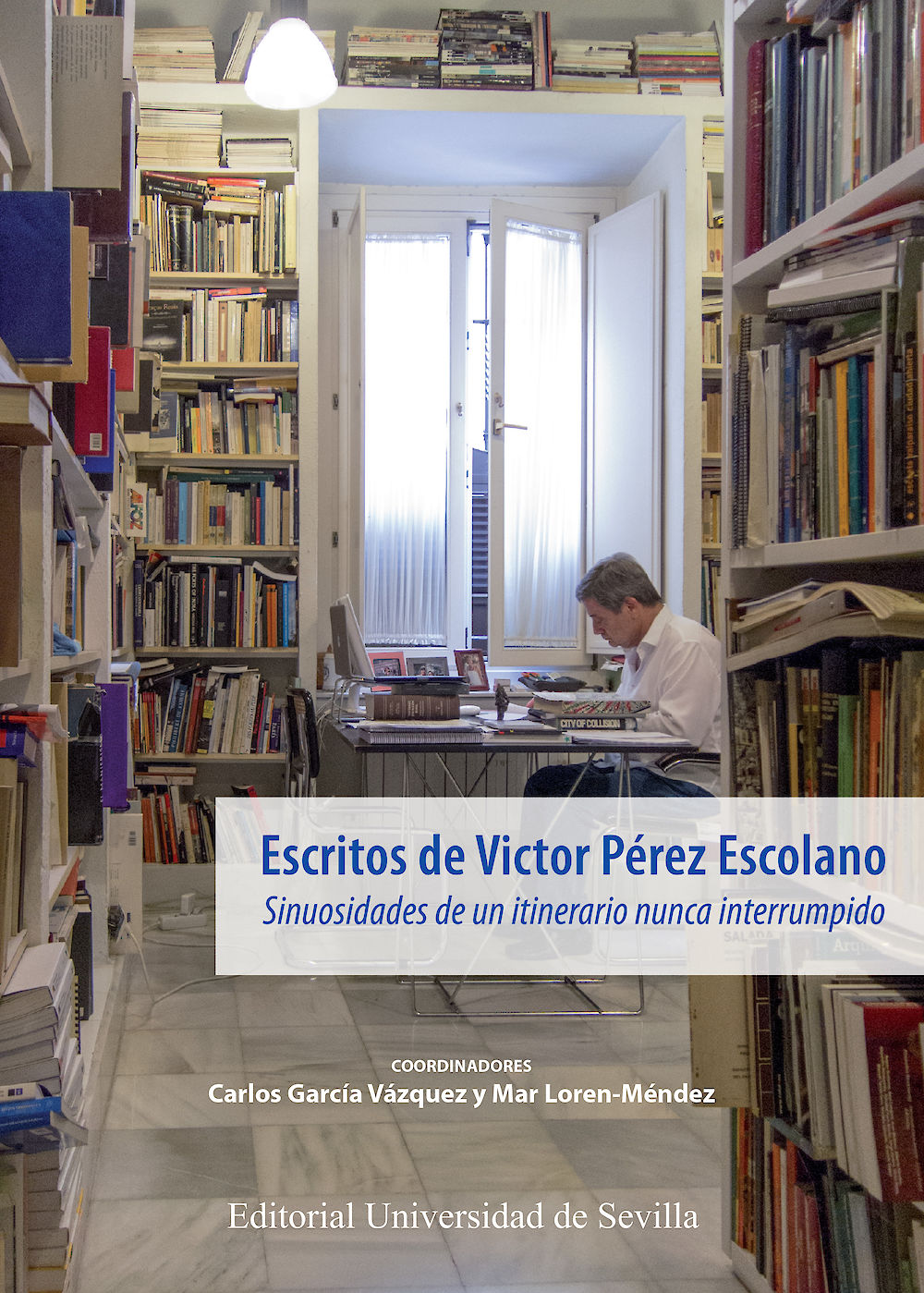
Con este libro la Universidad de Sevilla rinde homenaje al legado académico investigador de Víctor Pérez Escolano, Catedrático de Historia, Teoría y Composición Arquitectónicas de la Escuela Técnica Superior de Arquitectura. Premio FAMA de nuestra universidad, esta publicación recorre en 11 capítulos temáticos el excepcional itinerario recorrido por Víctor Pérez Escolano, que reivindica a cada paso la misión investigadora del arquitecto, su compromiso con la docencia y una decidida vocación pública.
Su trayectoria ha abierto caminos poco transitados por la investigación arquitectónica y es en la actualidad referencia obligada de la historia de la arquitectura. Esta publicación aúna las voces de instituciones a nivel nacional e internacional y el reconocimiento de aquellos que hemos tenido la fortuna de aprender, investigar y trabajar con él.
Más información
- Editorial: Editorial Universidad de Sevilla
- ISBN: 978-84-472-1825-7
- Publicado en Sevilla, España
- Indicios de calidad:
Puesto 59 (2014) para editoriales españolas en SPI (Scholarly Publishers Indicators in Humanities and Social Sciencies). Como garantía de calidad científica cuenta con un Comité Editorial de selección, estructurado por áreas de conocimiento. Posee un riguroso proceso de selección por parte del Comité editorial; evaluación por pares para evaluar la calidad, original y coherencia; proceso de revisión de la documentación gráfica y de estilo. Miembro de la UNE (Unión de Editoriales Universitarias Españolas), cumple los criterios establecidos por la CNEAI para que lo publicado por el mismo sea reconocido como “de impacto”. En REBIUN: en catálogos de 16 universidades. En WORLDCAT: en los catálogos de Université de Toulouse-Le Mirail, Biblioteca Nacional de España, entre otros.
- Autoría
- Mar Loren-Méndez
- Carlos García Vázquez
- Contribución
- Capítulo de libro
- Editora
- Idioma(s)
- Español
Compártelo
Copia el enlace a este ítem:Costa-Grafías
Sevilla, España
2014
El litoral turístico como sistema de diferencias. La Costa del Sol
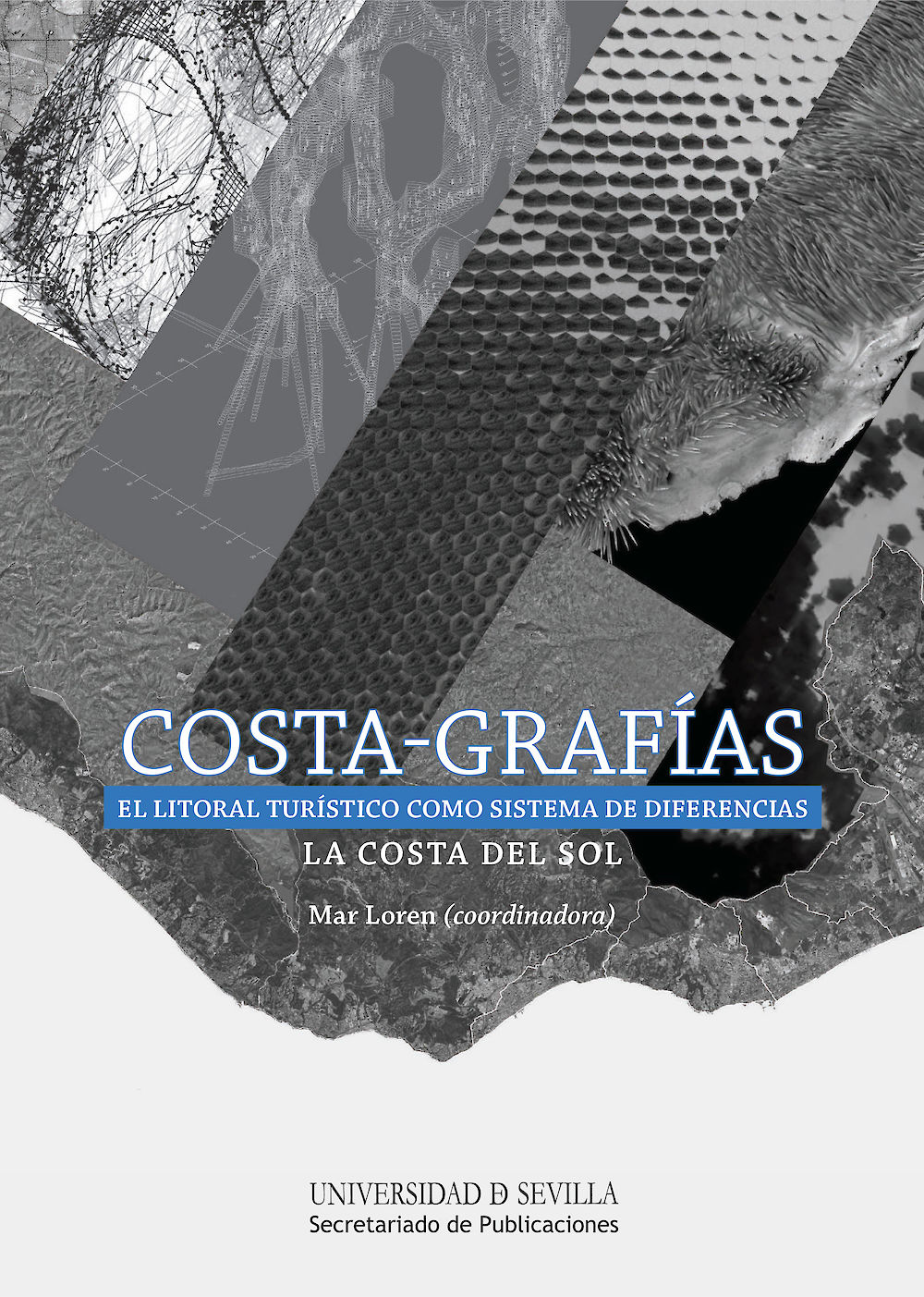
Estudia en toda su complejidad la Costa del Sol, conurbación urbana de más de 100 kilómetros de longitud cuya extensión y transformación acelerada en poco más de medio siglo hace necesario un análisis actualizado. “Costa-grafías” propone trascender el entendimiento de este territorio litoral como una unidad turística homogénea; a partir de un micro-análisis de la costa supera su aproximación topológica, presentando desde la especificidad de cada uno de sus tramos la diversidad como valor.
La metodología utilizada combina el análisis histórico y crítico con un trabajo intenso de campo y con la elaboración de cartografías y diagramas que recogen gráficamente la diagnosis de la costa.
Más información
- ISBN: 978-84-472-1530-0
- Publicado en Sevilla, España
- Indicios de calidad:
Sistema EFQM de calidad y excelencia (Fundación Europea Gestión de Calidad) con Observatorio y sistema de gestión de calidad. Miembro UNE. Editorial universitaria española con más sellos de calidad en Edición Académica CEA-APQ. Selección por Comité editorial, por áreas de conocimiento; evaluación por pares. Criterios CNEAI para ser reconocido “de impacto”. REBIUN catálogos de 16 universidades; WORLDCAT catálogos como Université de Toulouse-Le Mirail y Biblioteca Nacional de España... Ranking SPI (Scholarly Publishers Indicators) de editoriales mejor valoradas 2014; un ICEE de 3.814 (59 de 273 ranking general). Publishers Scholar Metrics: posición 29 top 100 editoriales más citadas. Book Publisher Library Metrics: promedio de inclusión: 30,4 posición 2/81 área Urbanismo y 13/134 área Artes.
- Contribución
- Capítulo de libro
- Coordinadora de la publicación
- Editora
- Prólogo / introducción
- Idioma(s)
- Español
Compártelo
Copia el enlace a este ítem:Texturas y pliegues de una nación
Valencia, España
2009
New York City: Guastavino Co. y la reinvención del espacio público de la metrópolis estadounidense
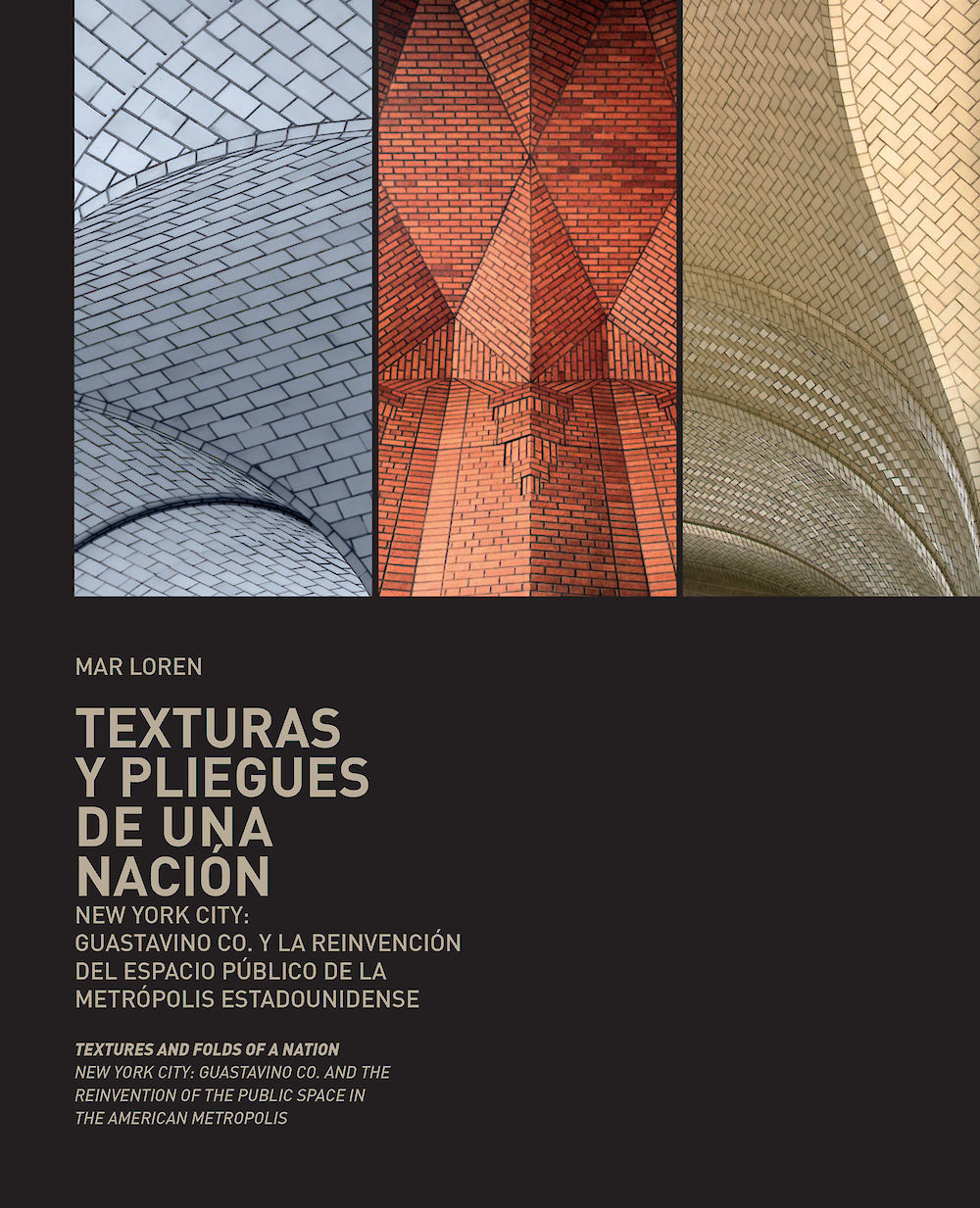
La contribución de la Compañía Guastavino en la historia de la arquitectura estadounidense no se limita a la voluntad de modernización del objeto arquitectónico sino que sus interiores trascienden a la dimensión urbana. La obra guastaviniana refleja así el compromiso academicista con el carácter urbano que la arquitectura debe asumir en la nueva ciudad Estadounidense. La cultura americana eminentemente rural en sus orígenes es empujada por la industrialización en el siglo XIX a una concepción urbana de sus sistemas productivos. La transformación de las meras aglomeraciones en ciudades acontece a principios del siglo XX, acompañado del compromiso urbano de los academicistas y de los ideales de la City Beautiful. Las aspiraciones puramente funcionales y especulativas de su trama en constante regeneración, dejan paso a una arquitectura estable y representativa, capaz de acoger los nuevos usos demandados por la ciudad capital.
La construcción de las nuevas infraestructuras, equipamientos culturales y corporativos, docentes y religiosos, e incluso aquella arquitectura que recoge las demandas higienistas, simbólicas o de ocio de la sociedad moderna, hace posible la introducción del espacio público en la retícula funcional heredada; la ciudad penetra en la arquitectura y se queda en su interior. La Compañía Guastavino suple la inexistencia de espacio público en la nueva metrópolis Estadounidense de principios de siglo XX excavando auténticos espacios urbanos en el interior de los edificios.
Más información
- Editorial: General Ediciones de Arquitectura
- ISBN: 978-84-936203-2-5
- Publicado en Valencia, España
- Indicios de calidad:
Indexaciones, Impacto y calidad editorial. Editorial especializada en publicación de libros y revistas de arquitectura: compromiso con la difusión de la investigación. Comienza en 1992 y ha publicado más de 60 títulos en dos colecciones: Memorias culturales y Biblioteca TC. Se encuentra en las bibliotecas AVERY, Universidad de Columbia; Loeb Design, Harvard University; UC Berkeley; Getty Research Institute y en la Cité de l'architecture et du patrimoine. Recibe el Premio Difusión de la Arquitectura 2001-2002 del COA Valencia. En REBIUN: en los catálogos de casi todas las escuelas de Arquitectura españolas.En WORLDCAT. Recomendado en guías docentes de Historia Urbana (ETSA Granada) y citado en conferencias. Proyección: en torno al 30% es venta internacional, Latinoamérica, Europa, Japón.
- Autoría
- Mar Loren-Méndez
- Contribución
- Libro completo
- Idioma(s)
- Español
- Inglés
Compártelo
Copia el enlace a este ítem:Bernard Rudofsky: desobediencia crítica a la modernidad
Granada, España
2014
Bernard Rudofsky (Moravia, 1905 – Nueva York, 1988) fue arquitecto, crítico, comisario de exposiciones, editor, diseñador de ropa y mobiliario, fotógrafo, investigador, profesor de universidades de prestigio en todo el mundo (Yale, MIT, Waseda). Creador polifacético y crítico irreverente, su figura se perfila hoy, más que nunca, como la de un creador de enorme actualidad, no sólo por su actitud crítica frente a los progresos de la sociedad de consumo, sino también por su reivindicación pionera de la economía, inteligencia y sostenibilidad de las arquitecturas anónimas del mundo, que documentó y estudió en sus viajes y publicaciones. Fue un destacado teórico del diseño, en concreto en el campo del diseño sociocultural comparativo, desarrollado en obras como The Kimono Mind, The Unfashionable Human Body o Now I lay me down to eat. A ello se le suma el profundo impacto de su actividad como comisario de provocadoras exposiciones y su labor como editor y director artístico de revistas de arquitectura y diseño de referencia como Domus, Pencil Points o Interiors. Uno de sus proyectos más influyentes fue la exposición Architecture without Architects (Arquitectura sin arquitectos), impulsada por el Museum of Modern Art de Nueva York en 1964. Bernard Rudofsky. Desobediencia crítica a la modernidad celebra el cincuenta aniversario de Arquitectura sin arquitectos, cuyo catálogo es quizás uno de los más conocidos sobre arquitectura vernácula. Sin embargo, a pesar de su proyección internacional, las ideas de Rudofsky quedaron durante su vida silenciadas por la preponderancia de los postulados modernos, más fieles a los centros académicos y al discurso de los grandes maestros. Su producción, por ello, resulta poco conocida en sus ámbitos de referencia: el diseño, el arte y la arquitectura, así como para el público en general. Desobediencia crítica a la Modernidad es el catálogo de una exposición homónima que tuvo lugar en 2014 en el Centro José Guerrero, Granada, España.
Más información
- ISBN: 978-84-7807-538-6
- Publicado en Granada, España
- Indicios de calidad:
- Editor
- Mar Loren-Méndez
- Yolanda Romero
- Contribución
- Capítulo de libro
- Editora
- Idioma(s)
- Español
- Inglés